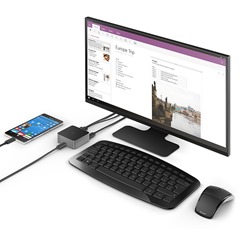 On Recode, tech analyst Tim Bajarin discusses a vision he had in 1989 for a “computing brick.” Tired of lugging around heavy laptops, he imagined a component containing a CPU and storage that you’d carry in your pocket and connect to screens and keyboards wherever you went. Now, he thinks, we’re almost there:
On Recode, tech analyst Tim Bajarin discusses a vision he had in 1989 for a “computing brick.” Tired of lugging around heavy laptops, he imagined a component containing a CPU and storage that you’d carry in your pocket and connect to screens and keyboards wherever you went. Now, he thinks, we’re almost there:
But imagine if a smartphone or a pocket computer could serve in the role of being your own personal computer that has a CPU, OS, storage and the necessary wireless technology to display what it sees on any screen it comes in contact with. Using touch and voice for input and navigation, there would be no need for a keyboard at each screen as I originally envisioned. That would mean that any smart screen can become your personal computing display.
In fact, some smartphones can almost do this already. My brother’s Lumia can dock with a keyboard and screen to act as a full-sized Windows computer (though it can’t run the same versions of software as a true desktop, and its versions include some limitations). And you can also use gizmos like the Chromecast to project your tablet or phone display across a full-sized TV screen. But with the Internet of Things on the horizon, Bajarin imagines this capability coming to all consumer mobile devices and TVs that go with them.
It’s an intriguing idea, not least of all for what it would mean for e-reading. We’ve already noted that Chromecast screen mirroring can turn your TV into a big-screen e-book display. But if you could do that with any device and any screen, screen reading could become even simpler and more attractive. Rather than read from a tiny screen, you could project e-books onto whatever bigger screen happens to be wherever you are. You could start reading a book on your TV at home, switch to your phone to continue it while traveling, then project it onto the TV in your hotel room without batting an eye.
The tech for this is probably just a few years away, and wider adoption a few years beyond that. Still, it would be interesting if it came to pass, wouldn’t it?




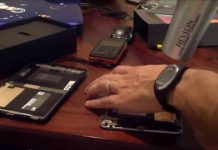
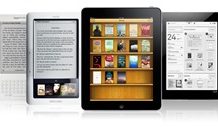
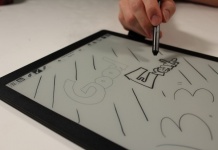



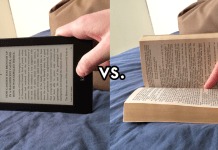
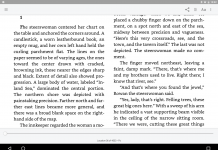

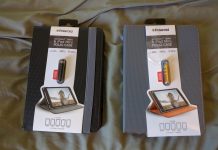

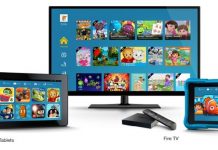
















We’re actually closer to this vision than we are to the internet of things.
The “internet of things” is about adding internet connectivity to sensors/data aggregators and remotely controllable special-purpose devices, current examples being home thermostats and color-changing LED light systems. The internet of things is NOT about adding screens and human-manipulative I/O devices everywhere. In fact, the idea that these ubiquitous devices would provide their own human interface devices is pretty much antithetical to the internet of things.
Barjarin’s and your visions have more to do with general ubiquitous computing than with the internet of things. Ubiquitous computing includes both the idea of pervasive special-purpose sensors and devices and of portable remote controllers. The internet of things can be seen as a component of or an implementation approach to a larger vision of ubiquitous or pervasive computing.
So, no, the internet of things won’t contribute to Barjarin’s particular vision of ubiquitous personal computing nor your vision of ubiquitous e-reading. What will contribute to both of those is 1) the ubiquitous of smart phones, 2) the embedding of screen-cast technology as an OS capability in mobile device OS’s (currently Android, but will iOS and Windows be far behind?), 3) the support for casting as a built-in capability in “smart” screens, and 4) cloud technology for providing access to data and CPU cycles that would not be locally available.
I would argue that we’re already pretty much in place on #1 and #2, and have as much of #4 as we need for e-reading at least, so the limiting factor right now is #3. Devices like Chromecast can be seen as a means of retro-fitting old tech to this new connectivity. So we really are already much closer to ubiquitous e-reading than we are to an internet of things.
I can think of few idea more absurd that fixing up my home so some creep in Crazistan can mess with it. Imagine going on vacation and coming back to discover that your heat, set up to 100 degrees F, ran the entire time, while your freezer was turned off, spoiling $1000 worth of food.
And all for what… not getting up and walking ten feet to a manual thermostat?
Apple CarPlay and Android Auto implement part of this idea. Your smartphone connects with a (larger) touch screen in a car, and this screen is used for display and input. The display does not exactly mirror the smartphone display. Instead, icons for applications designed for use within an automobile are displayed. But the applications access you your smartphone media files.
The “computing brick” envisioned by Tim Bajarin might do something similar, i.e., applications that are tailored to the available display size and input type could be featured when the “brick” makes a connection.
I think there is one major problem: security. I have seen public access computers at libraries and hotels that have been compromised with trojans and viruses. A keyboard and/or screen in common use might be compromised. For example, the keyboard might have a built-in keystroke logger. Of course, if you are using Wi-Fi or an Ethernet port in a public area that might be compromised. In general, security should be improved.